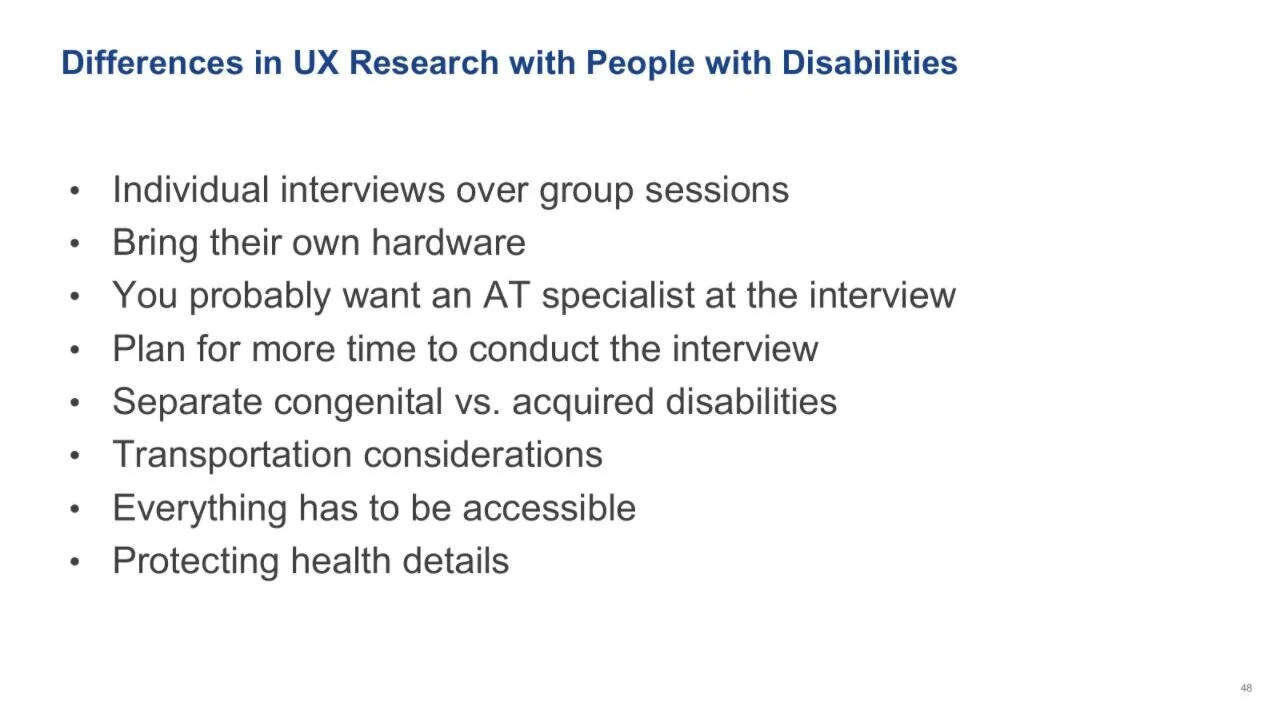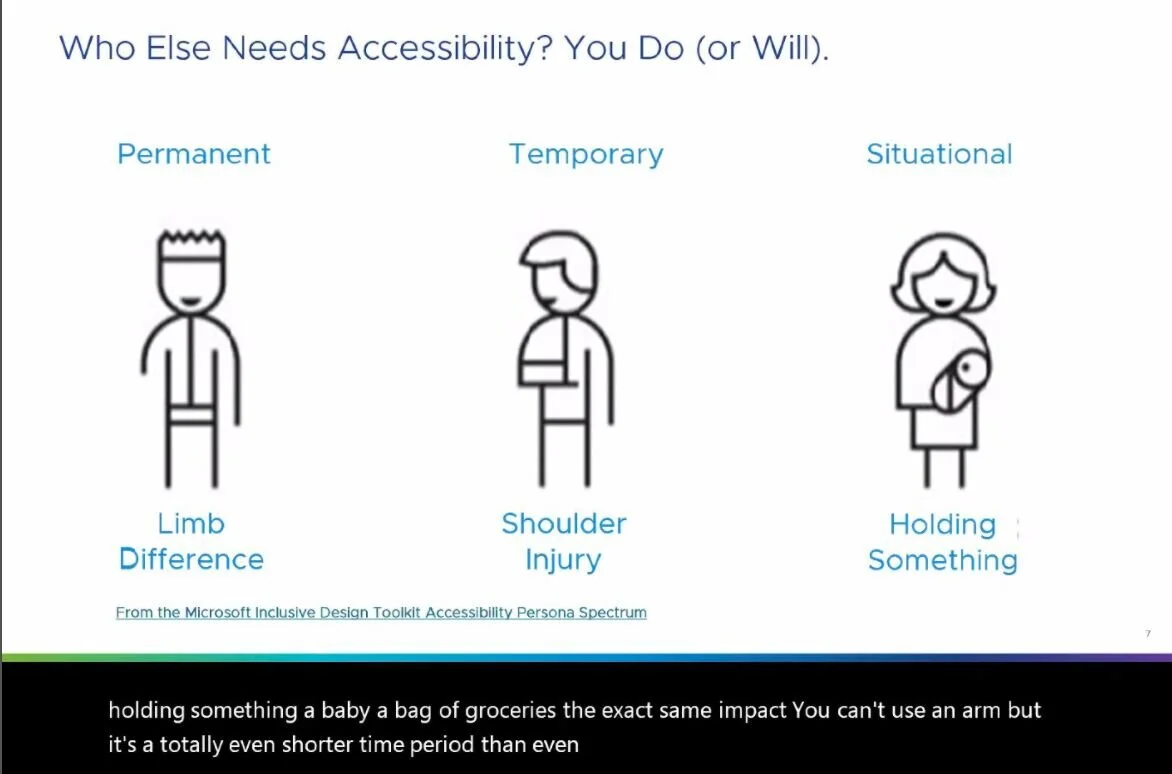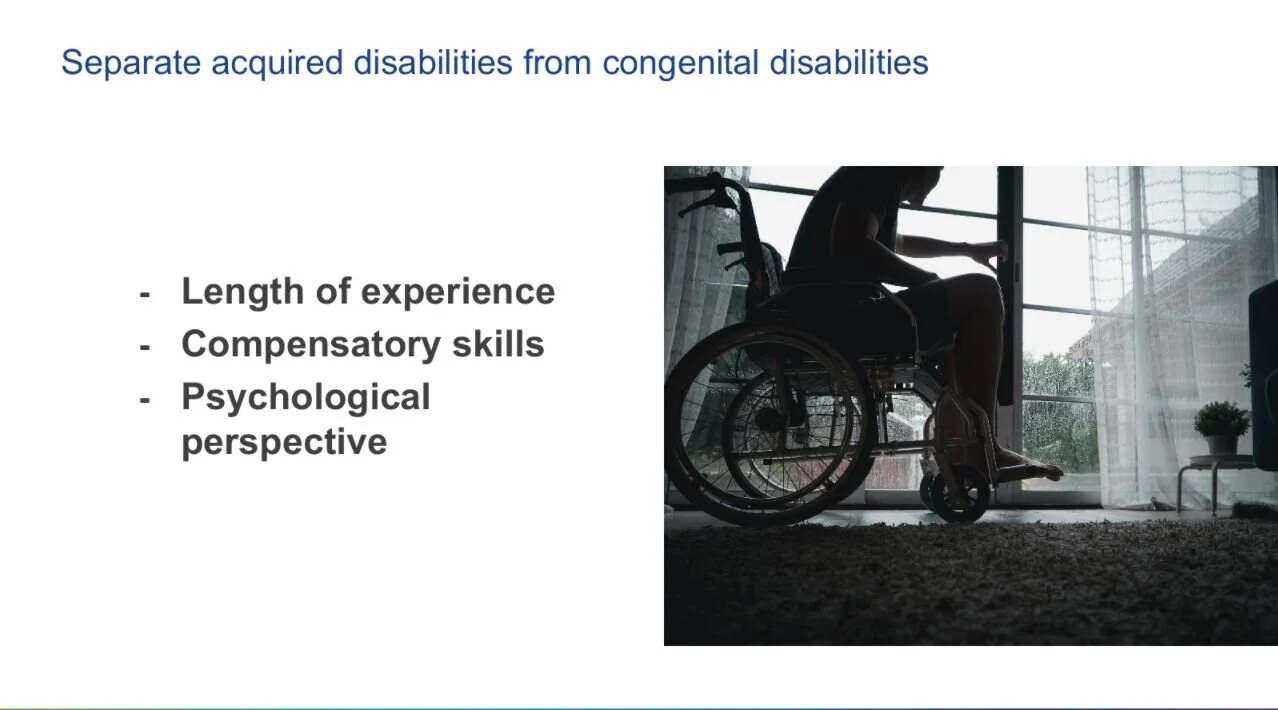We all need accessibility!
Last night’s Ask Like A Pro Alumni Mixer event “Accessible Research: Considering People with Disabilities” with Sheri Byrne-Haber (disabled) had an unprecedented 52% attendance rate before the Zoom maxed out at 100 people! For context, typical live attendance ranges from 25-30%. We apologize to anyone who was unable to attend live. The recording will be distributed to all registrants shortly.
In addition, the ticket sales grossed $2705.00! The net proceeds will all be donated to the GAAD foundation. Sheri and I are working on a follow-up event so stay tuned!
Elizabeth Morin-Lessard, PhD summed up the talk terrifically. Thank you, Elizabeth!
"So much helpful info and many actionable suggestions in just one session! 💡 Here are a few of my takeaways.👇🏼
We all need accessibility! Users can have disabilities that are permanent (limb difference), temporary (injury), or situational (holding something, like bags or an infant). Together that’s about 30% of the population;
Make sure that the code for your website, app, product, etc. does not block assisted technology from working;
Accessibility work can help businesses gain and retain more customers. Efforts to make technology accessible from the get-go will prevent rework later on and may solve unanticipated problems;
When conducting UX Research with people with disabilities: Hold individual interviews (vs. group sessions), plan for more time, separate congenital (inherited) from acquired (“new-normal”) disabilities - they come with different challenges for users, think of transportation, protect health details, and make sure everything is accessible, from compensation to research equipment;
Give your personas disabilities! Think about the assistive technologies they use, the prevalence of disabilities, and the impact of disproportionate prevalence (e.g. low vision, mental health conditions) on the user experience;
Accessibility is a team sport. We need to think of how to improve it in our communications, knowledge and skills, UX/CX, the information and communications technology development lifecycle, personnel, and culture."





